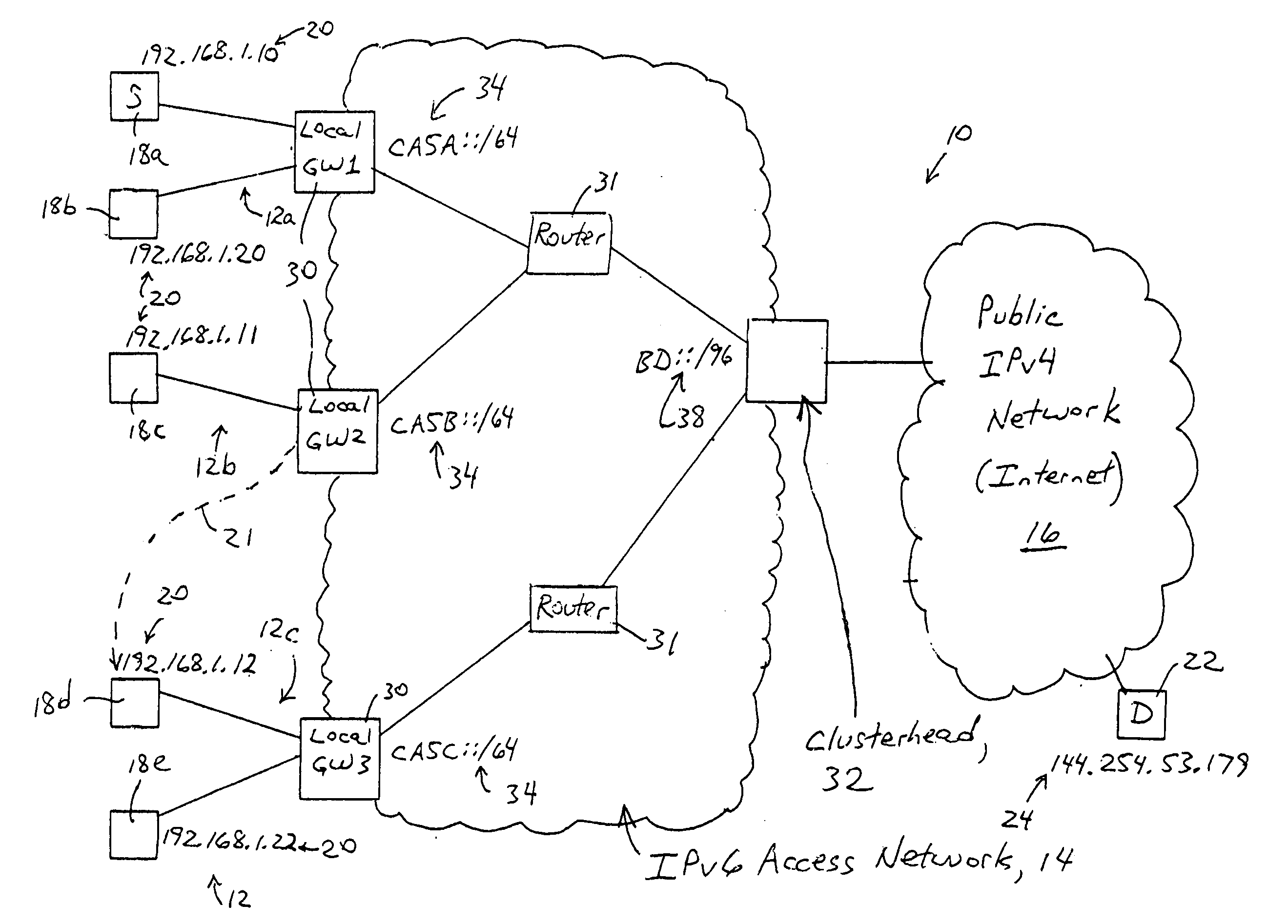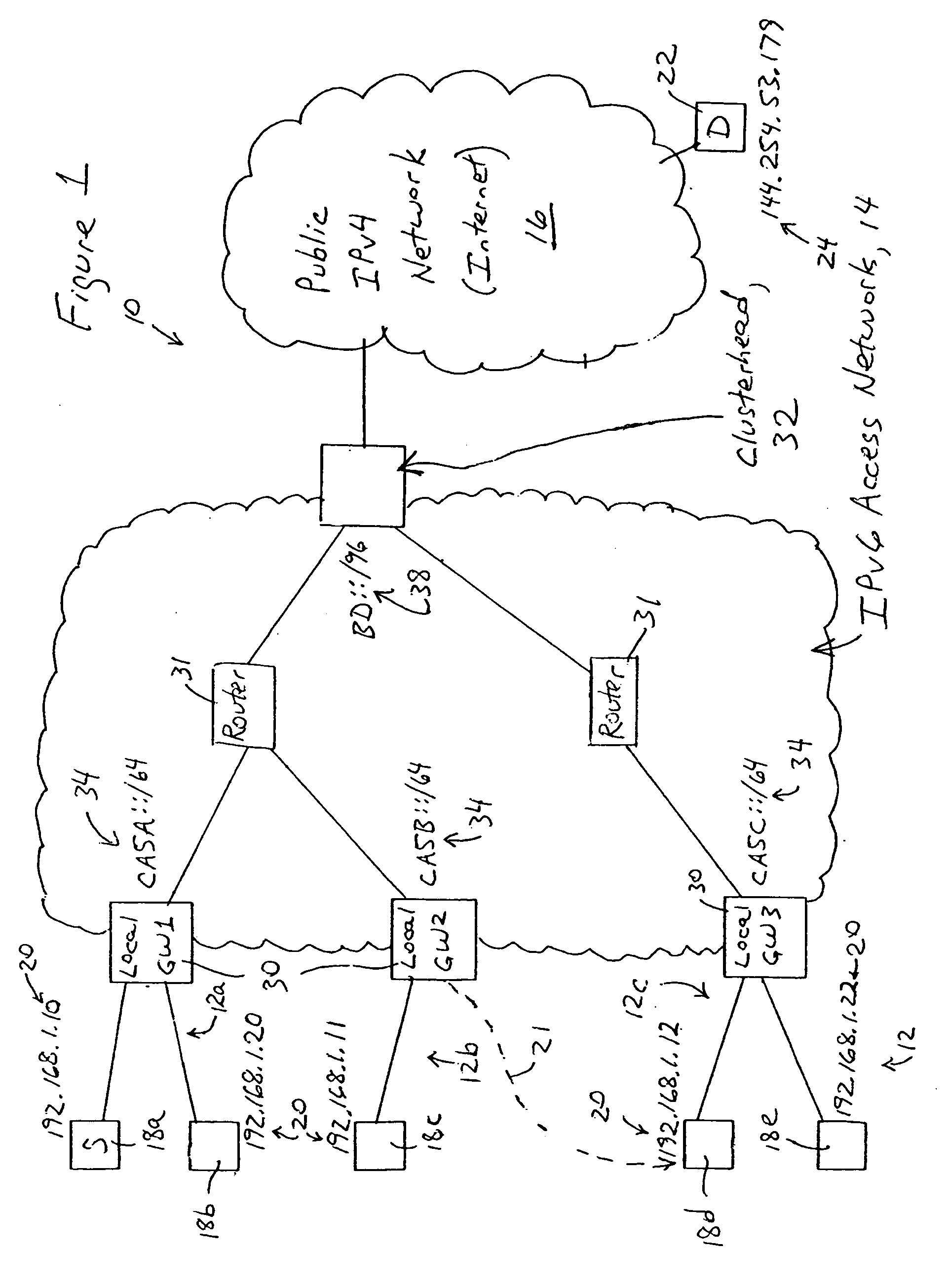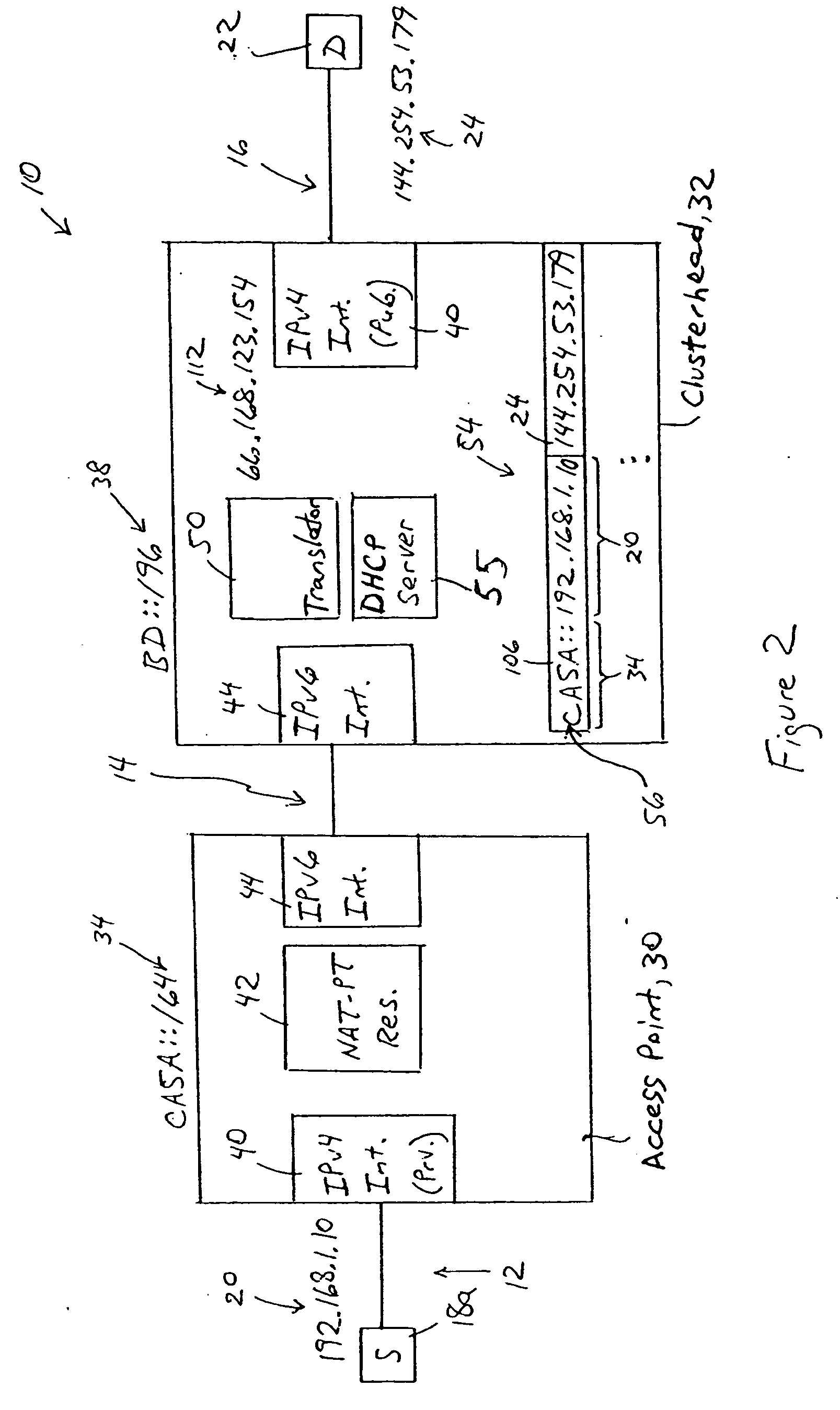Access network clusterhead for providing local mobility management of a roaming IPv4 node
a node and access network technology, applied in data switching networks, instruments, multiplex communication, etc., can solve the problems of imposing substantial processing requirements on an ipv4 host, increasing the risk of connectivity loss, and not being practicable in the field of access network clusterheads
- Summary
- Abstract
- Description
- Claims
- Application Information
AI Technical Summary
Benefits of technology
Problems solved by technology
Method used
Image
Examples
Embodiment Construction
[0025]FIG. 1 is a diagram illustrating an internetworking system 10 including an IPv6 access network 14, according to an embodiment of the present invention. The IPv6 access network includes access points (also referred to as local gateways) 30 providing wireless access cells 12 (e.g., 12a, 12b, 12c) geographically dispersed throughout a customer premises (e.g., a building, etc.), and a clusterhead (also referred to as a remote gateway) 32 providing connectivity for IPv4 host devices 18 (e.g., 18a, 18b, 18c, 18d, 18e) accessing the access points 30 to reach a public IPv4 network 16. Each access point 30 is configured for generating a corresponding wireless access cell 12, for example an IEEE 802.11 based wireless cell having Extended Service Set (ESS) capabilities, enabling a host device 18 to obtain connectivity with the IPv6 access network 14. Although not shown in FIG. 1, it will be readily apparent that other IPv6 network nodes may be deployed within the network, for example wir...
PUM
 Login to View More
Login to View More Abstract
Description
Claims
Application Information
 Login to View More
Login to View More - R&D
- Intellectual Property
- Life Sciences
- Materials
- Tech Scout
- Unparalleled Data Quality
- Higher Quality Content
- 60% Fewer Hallucinations
Browse by: Latest US Patents, China's latest patents, Technical Efficacy Thesaurus, Application Domain, Technology Topic, Popular Technical Reports.
© 2025 PatSnap. All rights reserved.Legal|Privacy policy|Modern Slavery Act Transparency Statement|Sitemap|About US| Contact US: help@patsnap.com



